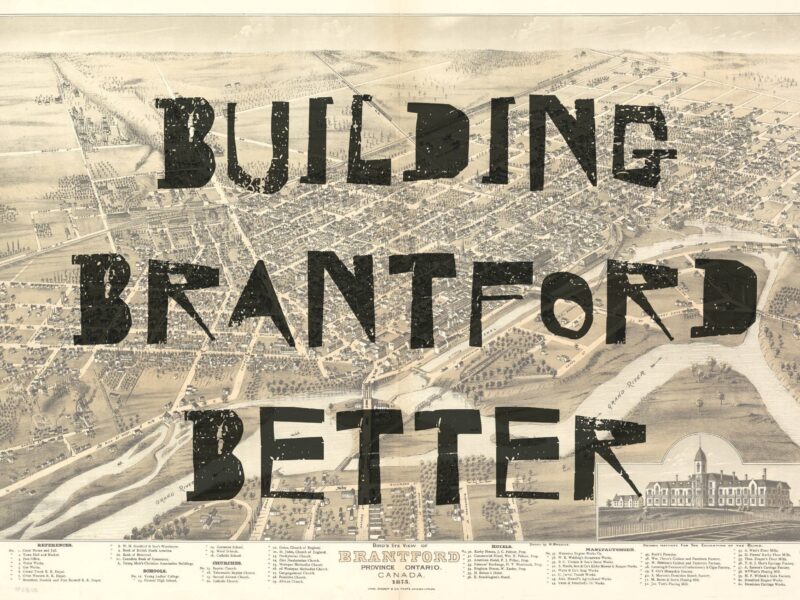This is the south side of Colborne Street, just beyond Grand River Hall. On the morning Tuesday June 8th, 2010, a high-reach excavator slammed into the upper corner of 35-37 Colborne Street and just like that, the demolition of South Colborne had begun.
But well before June 8th, an expansive drama surrounding the fate one of the longest stretch of pre-Confederate buildings in Canada rocked this town. Because before it was a pile of crushed bricks and broken wood beams, it was something very different.
History was made in those buildings, buildings that are no longer there. Hazel Smith, one of Canada’s very first female dentists had an office there in the 1930s. South Colborne is where footwear magnate John Agnew began his shoe empire. One of Canada’s first grocery stores was housed on South Colborne, as well as a long-time office of the city’s most famous son – Alexander Graham Bell.
In recent decades, it became apparent that the golden age of Brantford’s downtown had long passed. The city was hit hard in the 1980s, when so many major industries closed up shop and headed elsewhere. For years, the downtown core decayed and crumbled until the buildings along South Colborne became ugly shadows of their former selves.
But with new life breathed into Brantford by the arrival of Laurier, Nipissing and Mohawk, it seemed that the municipal government was ready to finally decide the fate of those Colborne buildings, some of which were over 170-years old. The conclusion, reached after countless city council sessions and despite active protest from a number of groups? Destruction. Demolition. But first – expropriation.
Though the buildings were old and decrepit, they still had residents. Millions were spent to relocate the dozens of Colborne inhabitants, some of which had lived there for decades. In November of 2009, the last few people were moved out, leaving South Colborne a desolate, empty ghost town. Demolition, though delayed by federal demands for heritage and environmental inspection, and only slightly hindered by protests and petitions, was underway only nine months later. There are still no concrete plans for the land.
41 buildings. 41 stories. 41 empty plots of land. That is the history of South Colborne.



